
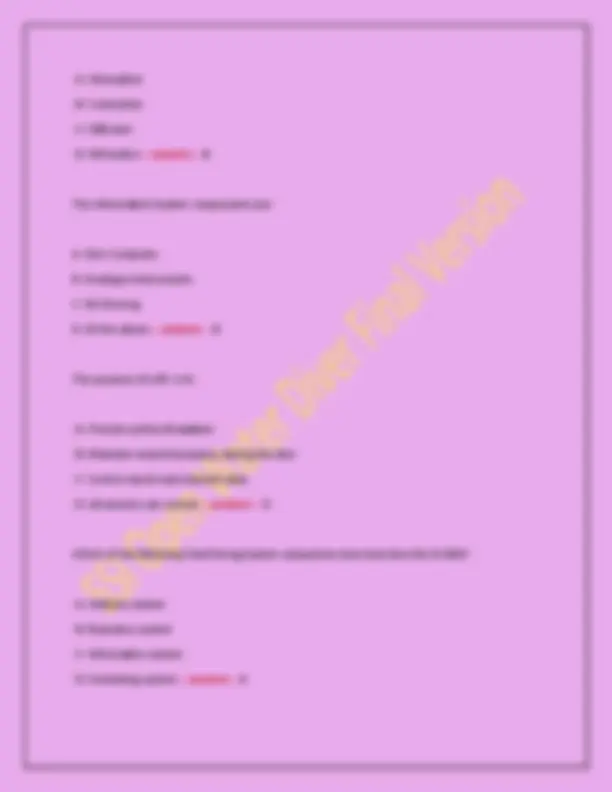
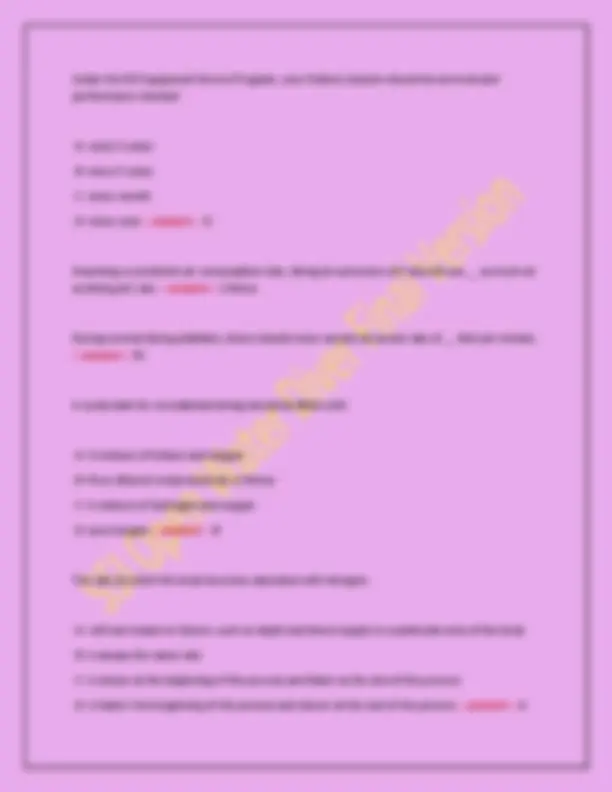
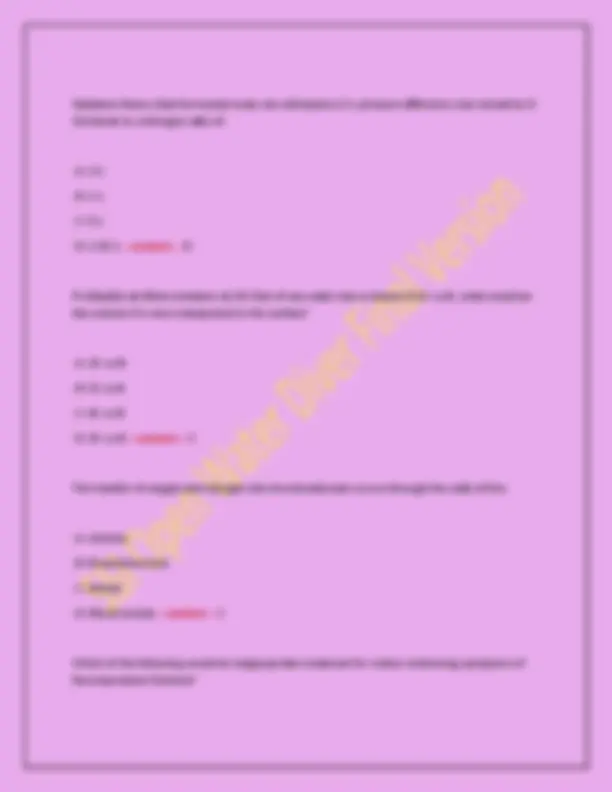
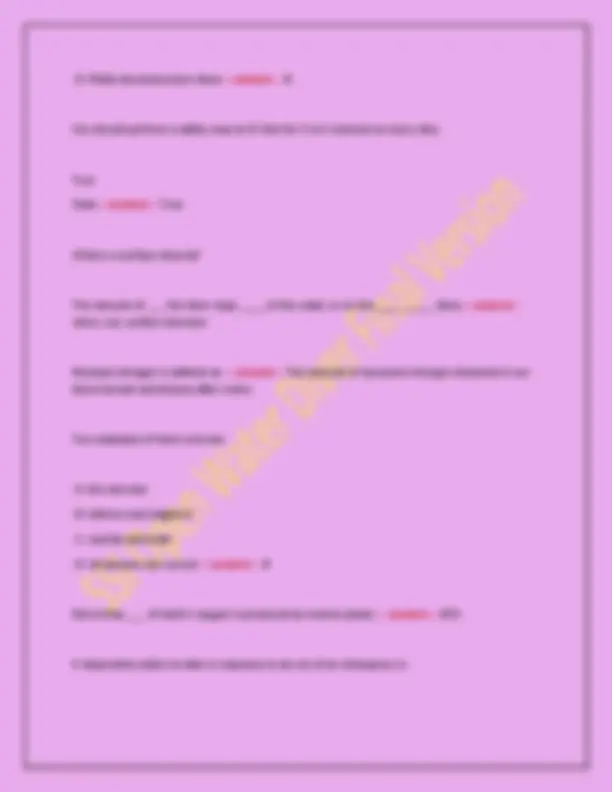
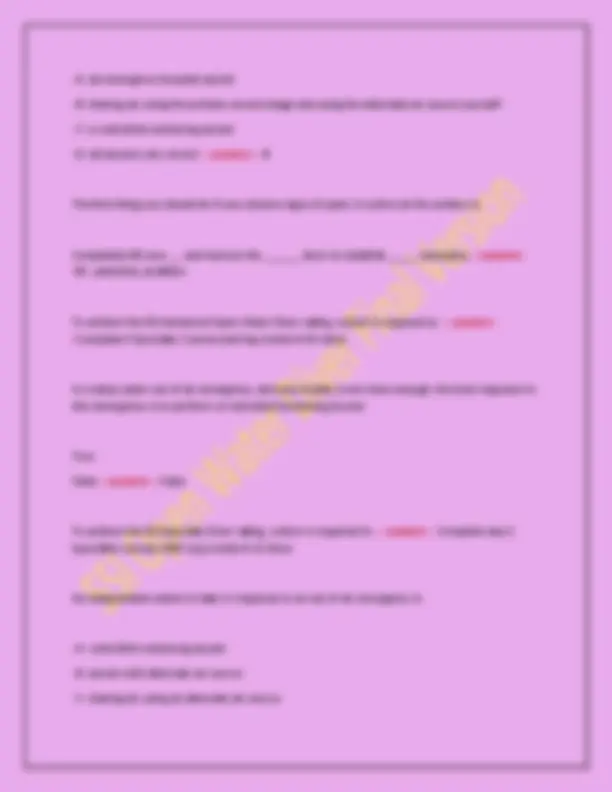
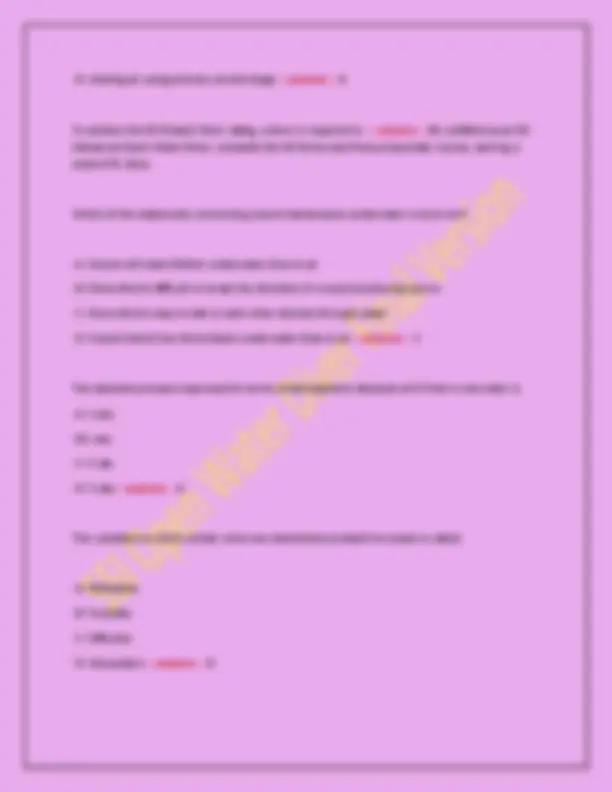


Study with the several resources on Docsity

Earn points by helping other students or get them with a premium plan


Prepare for your exams
Study with the several resources on Docsity

Earn points to download
Earn points by helping other students or get them with a premium plan
Community
Ask the community for help and clear up your study doubts
Discover the best universities in your country according to Docsity users
Free resources
Download our free guides on studying techniques, anxiety management strategies, and thesis advice from Docsity tutors
SSI Open Water Diver Final Version C Newest 2025 Actual Exam Questions And Correct Detailed Answers (verified Answers) ||Already Graded A+||Brand New Version!!
Typology: Exams
1 / 12

This page cannot be seen from the preview
Don't miss anything!







Body heat is lost at a rate of ___ than air. :- answers - : 25 - 30 times faster Proper equalization techniques must be learned in order to:
Under the SSI Equipment Service Program, your Delivery System should be serviced and performance checked:
Haldanes theory that the human body can withstand a 2:1 pressure difference was revised by D Workman to a nitrogen ratio of:
Earplugs: